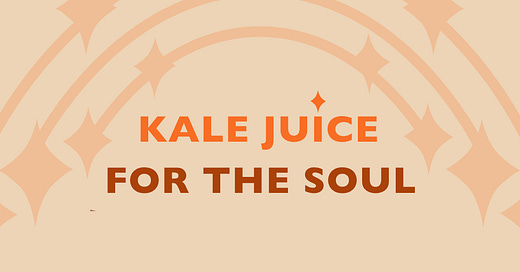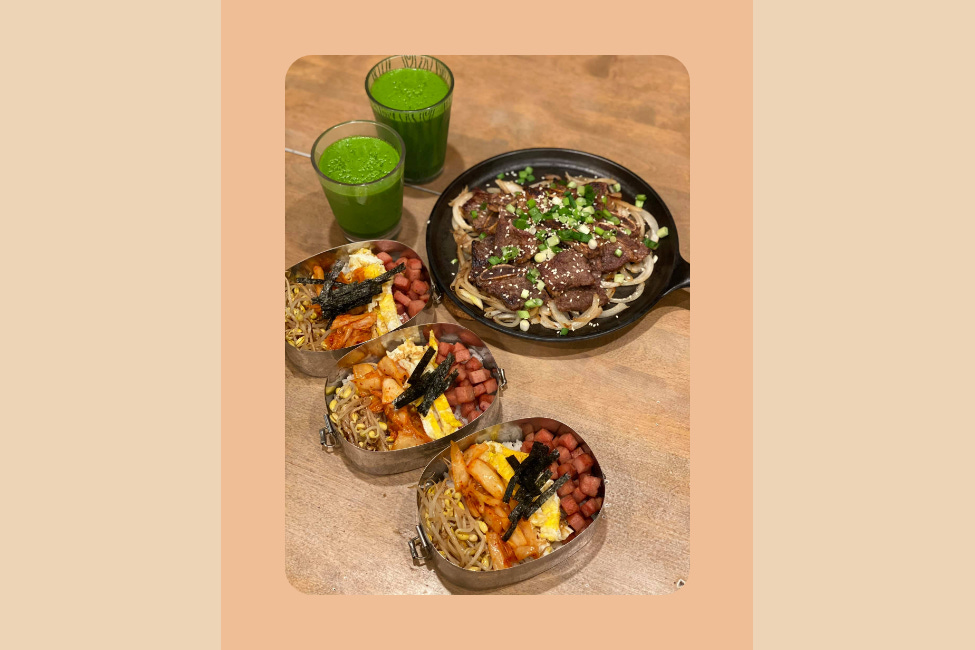In the midst of a global pandemic, we make kale juice. A smoothie rather, of apples, oranges, limes, kale and ice. Our kale juice is a silent prayer, drunken quickly before the green juice browns. It’s a hope that we can prepare against the invisible. The hidden damage that comes with stress or a buildup of fatty meats, smoke, sugar and the like. And of course, a virus.
Kale juice must have a kick to it in order to be kale juice. The lime must be sour, the kale rough against the tongue, the fruit tart. Like all health tonics, kale juice must feel a bit like suffering. And like people who break the rules they create, we sneak in a few glugs of orange juice or yakult every now and then.
I don’t try to measure the benefits of kale juice. I don’t really want to know how many nutrients are lost by drinking instead of eating them. Or whether the fiber has been blended too far into oblivion. Kale juice is self medication not for the mind but for the soul. The image it conjures, of staying healthy and strong, is enough.
Kale used to be exclusively hipster food. It was overpriced salad from Urth Cafe, eaten among a crowd too fashionable for a table for two – one being myself and two being mom or dad.
Fascinated by this glorified green, we planted it in our garden, another word for a plot of parched Southern Californian earth. Kale became the only vegetable that flourished, enduring beyond the scallions and tomatoes and sweet potatoes. The kale grew despite the holes carved out by hungry snails. And the kale grew into a monster, large and unwieldy, so tough it was practically inedible. Proof that kale was a worthy vegetable for smoothies.
Years passed and we found kale at H-Mart for cheap. We no longer needed to compete with the snails. Next to our bowl of braised pork and rice sat a cup of kale juice. Dinner would change from night to night but the cup of kale juice would stay constant. The smell of burnt plastic from a tired Vitamix always in our periphery.
As a child, I’d glow at the sight of a Costco Vitamix sales demonstration, an occurrence rare and special. Behind a large table set on a dais, a man or woman would distribute smoothies or soups in small paper cups. Greedy, my brother and I would take a sample in each hand, sometimes more, and mutter something about saving a sample for our parents. We’d turn around and down both cups, utterly conspicuous. And repeat the process.
Meanwhile, a voice on a loudspeaker explained the efficiencies of the blender, which seemed like it could make just about everything. Even I was surprised by the ease with which the salesperson transitioned between a wintertime tortilla soup to a summertime watermelon smoothie. The Vitamix we eventually bought came supplied with a recipe book, but we tucked it into an untouched bookshelf, never to be seen again. The Vitamix was for making kale juice.
But kale juice was not the start of the story. Before kale juice there was intermittent fasting. And before intermittent fasting there was keto. Somehow, these health trends wormed their way into my parent’s lives even though they were probably targeted to millennials and Gen-Z like me. I still remember my first keto dinner without rice and felt like somehow my immigrant parents became more American than me. Eventually, we rid ourselves from subtractive diets and settled on an unobtrusive additive – kale juice.
Taking advantage of the Costco Vitamix seven year warranty, we bring home a new Vitamix whenever the old one dies. The promise of health and efficiency, never subsiding.





